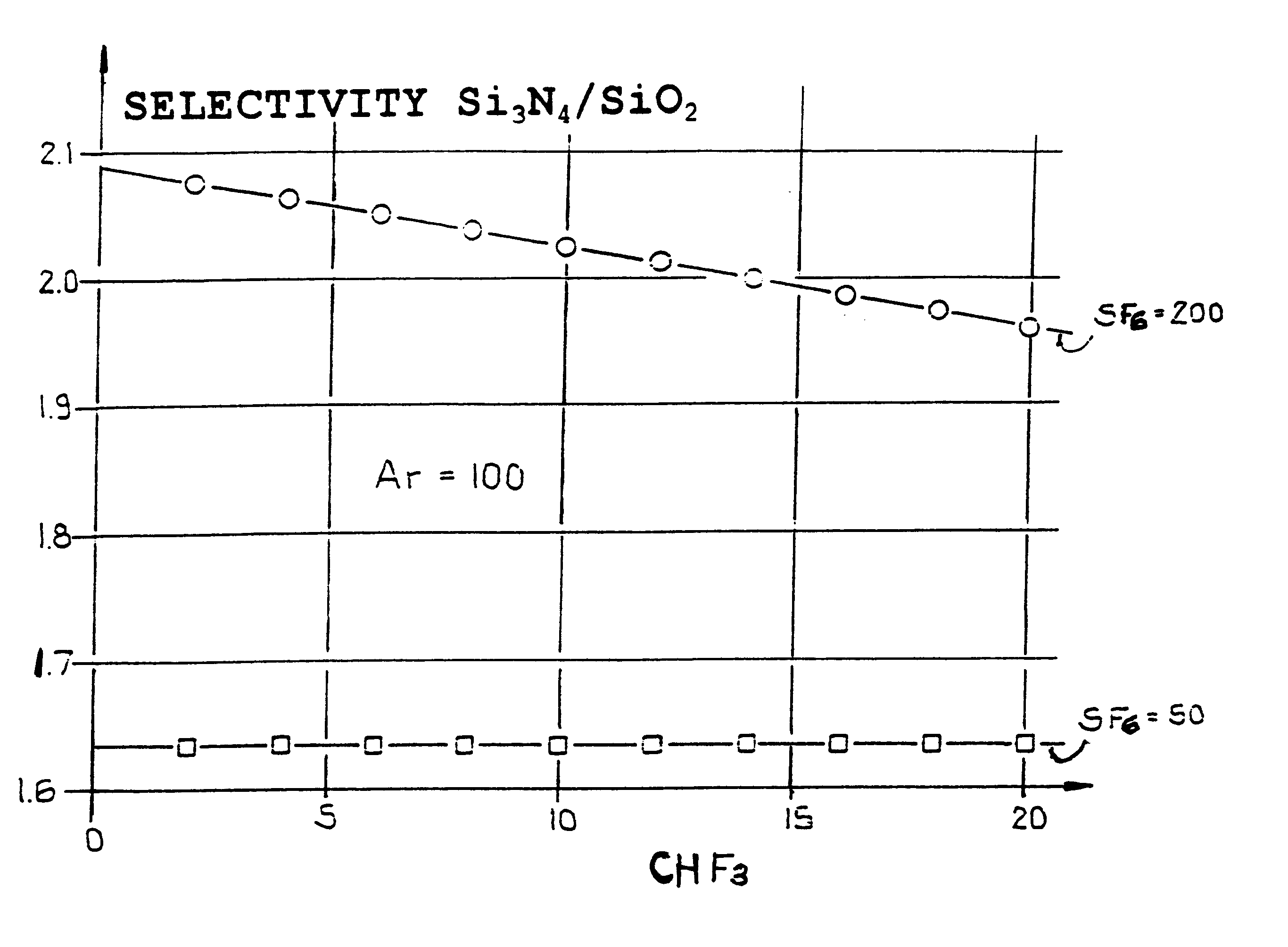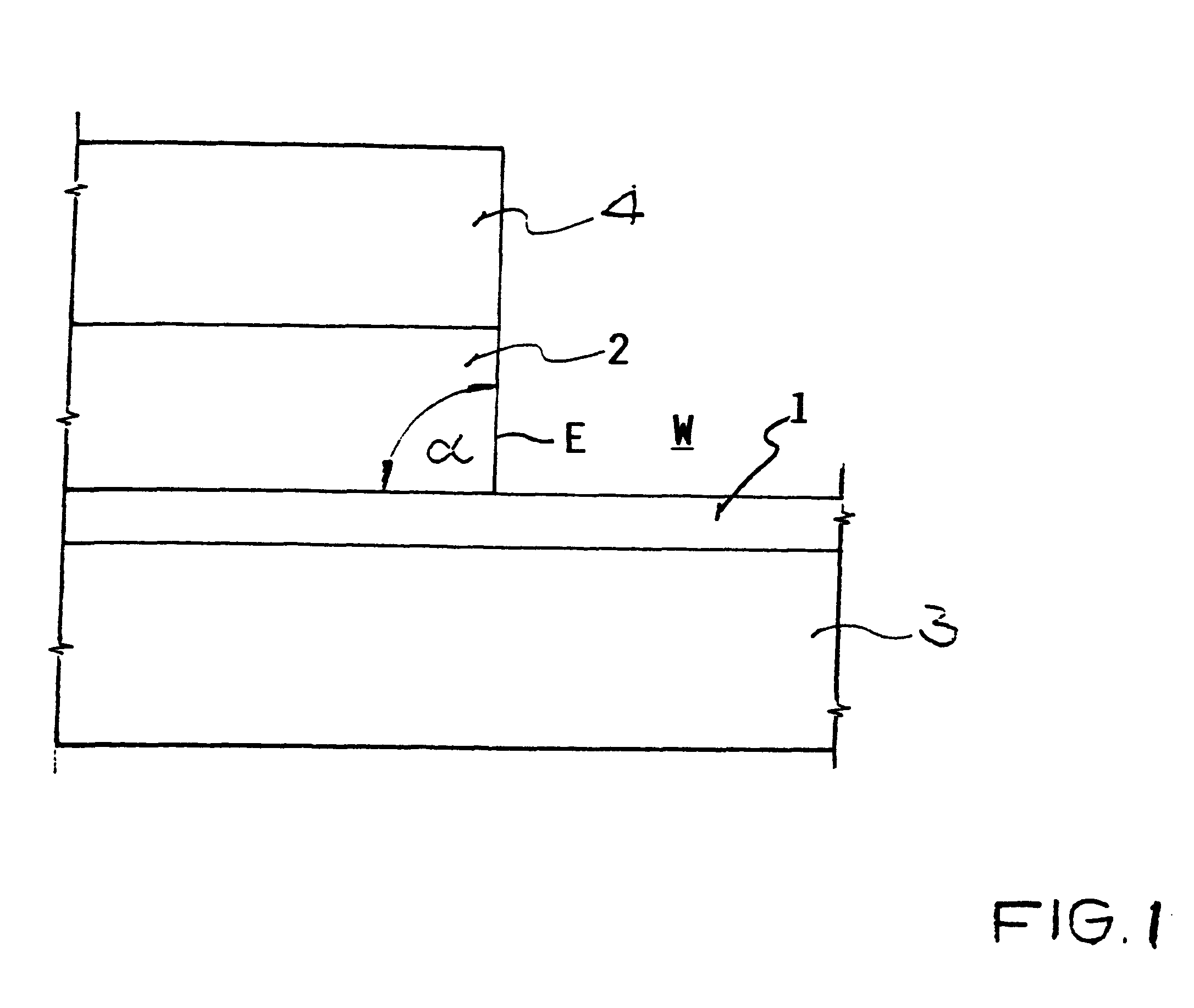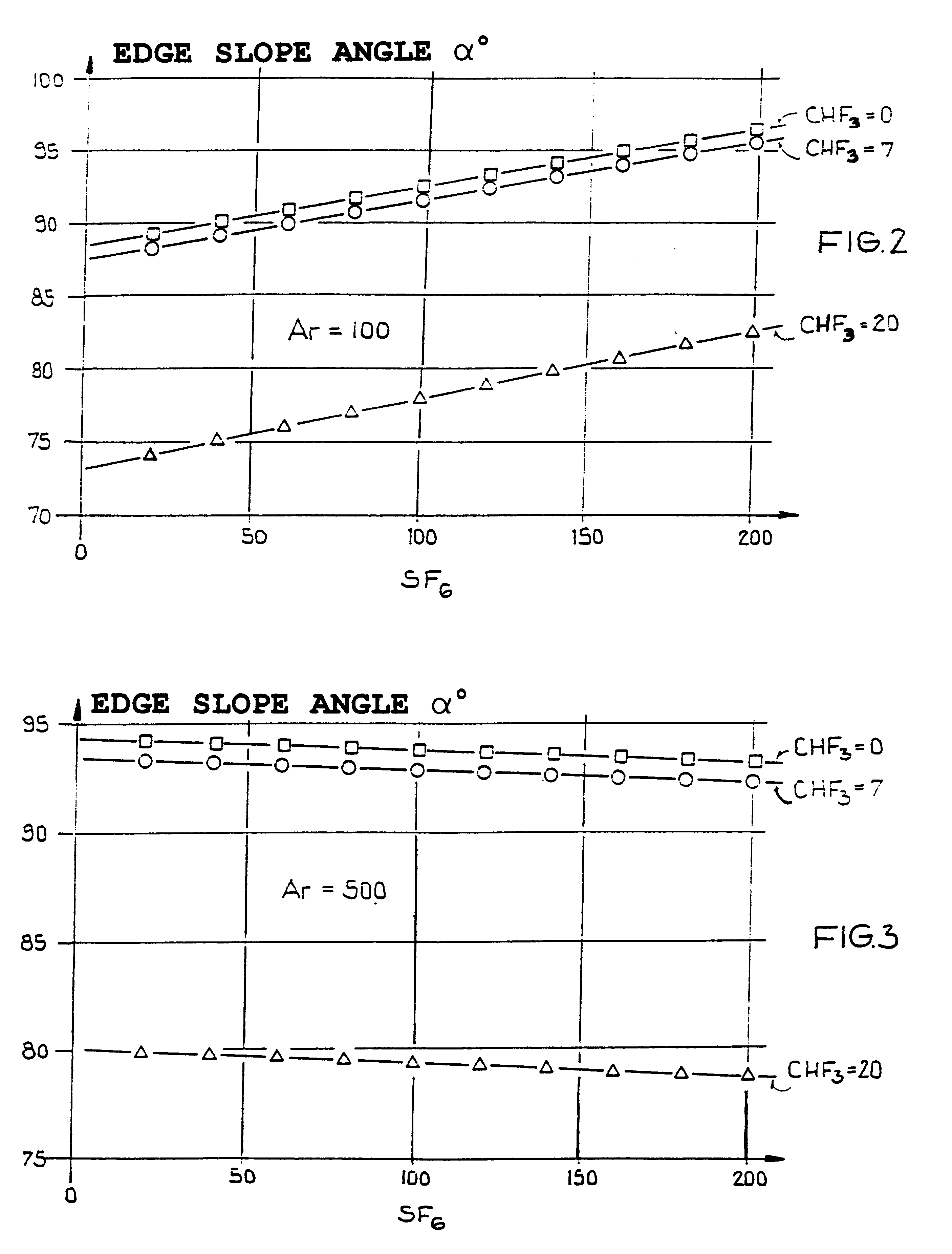Method for anisotropic plasma-chemical dry etching of silicon nitride layers using a gas mixture containing fluorine
a technology of anisotropic plasma and gas mixture, which is applied in the direction of semiconductor/solid-state device manufacturing, basic electric elements, electric apparatus, etc., can solve the problems of significant disadvantage, process, inability to use silicon nitride layers in the reactor chamber, and inability to achieve the effect of alumina-based etching,
- Summary
- Abstract
- Description
- Claims
- Application Information
AI Technical Summary
Benefits of technology
Problems solved by technology
Method used
Image
Examples
Embodiment Construction
FIG. 1 schematically shows a side view or a cross-section of a layered semiconductor structure that has already been etched by an etching process according to the invention, to form a window or opening W bounded by an etched edge E, as will be described in detail below. The illustrated semiconductor structure was formed by a process as follows.
In a first step, a first or lower semiconductor layer 1 comprising or preferably essentially consisting of SiO.sub.2 was applied on a substrate material 3, for example comprising or essentially consisting of silicon. In the case of using silicon as the substrate material 3, the semiconductor layer 1 of SiO.sub.2 can be formed thereon either by thermal oxidation of the silicon of the substrate 3, or by deposition of a silicon oxide layer by a CVD or a PECVD process. The manner in which the various layers in the presently described structure are formed is not a significant feature or limitation of the invention, and can be carried out according ...
PUM
 Login to View More
Login to View More Abstract
Description
Claims
Application Information
 Login to View More
Login to View More - R&D
- Intellectual Property
- Life Sciences
- Materials
- Tech Scout
- Unparalleled Data Quality
- Higher Quality Content
- 60% Fewer Hallucinations
Browse by: Latest US Patents, China's latest patents, Technical Efficacy Thesaurus, Application Domain, Technology Topic, Popular Technical Reports.
© 2025 PatSnap. All rights reserved.Legal|Privacy policy|Modern Slavery Act Transparency Statement|Sitemap|About US| Contact US: help@patsnap.com



